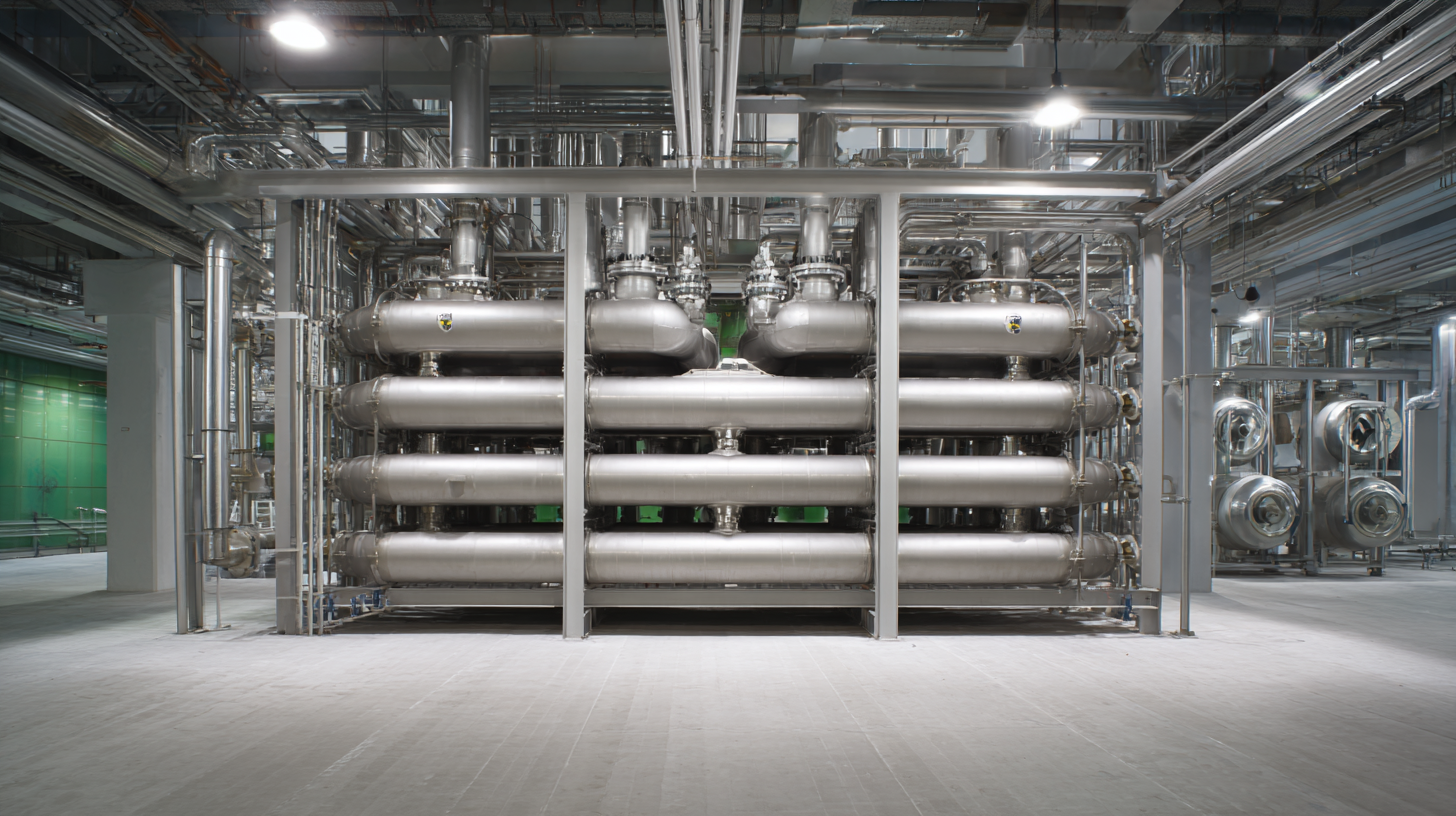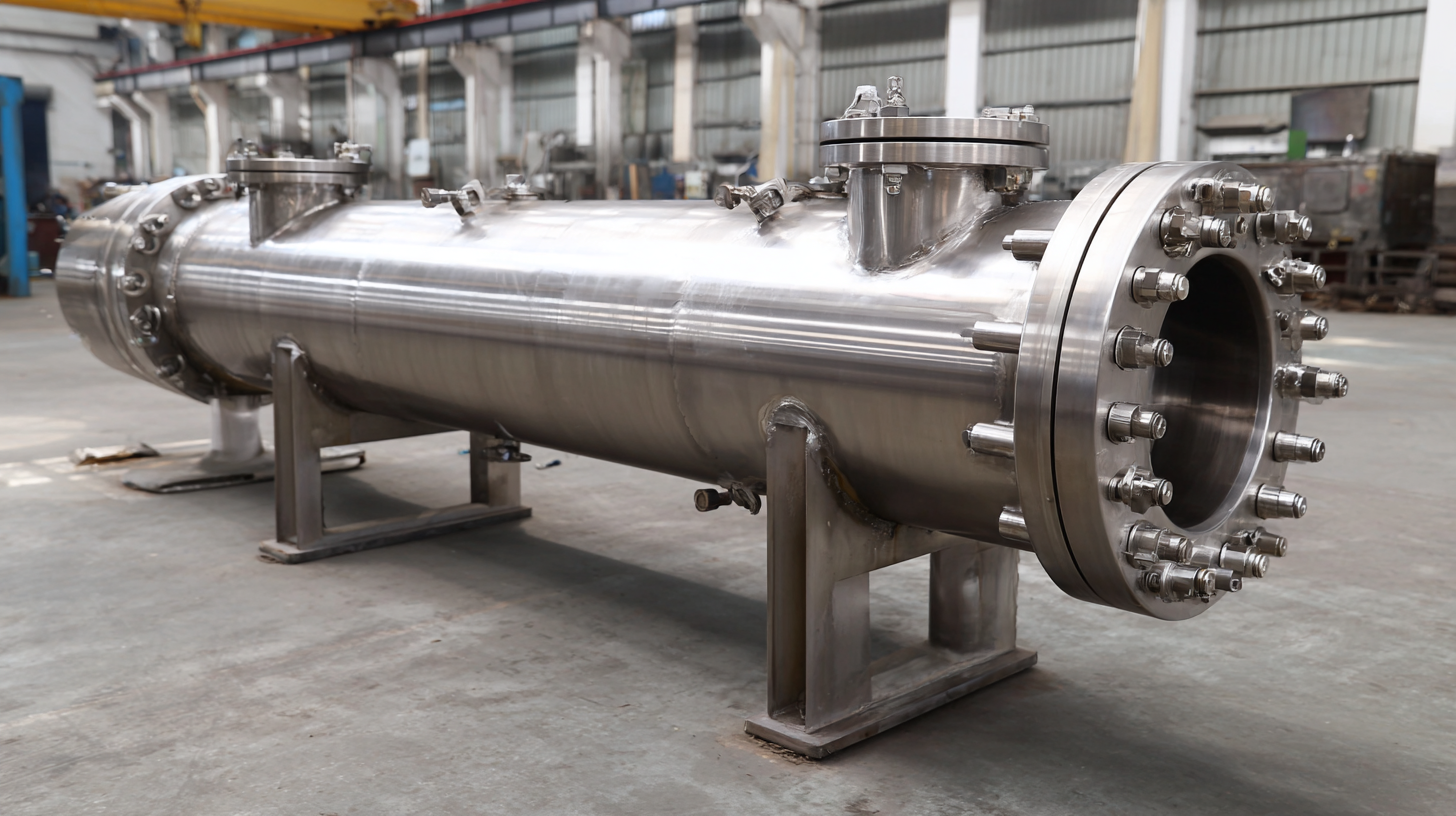Leave Your Message
In the ever-evolving landscape of thermal management technology, the performance of Brazed Plate Heat Exchangers (BPHEs) has become a focal point for industries aiming for efficiency and sustainability in 2025. As businesses seek to optimize their heat transfer solutions, understanding the latest trends and strategies is crucial. This blog will delve into the top strategies for enhancing the performance of Brazed Plate Heat Exchangers, highlighting comparisons with traditional heat exchangers and innovations driving the industry forward.

The insights shared here will equip professionals with the knowledge necessary to make informed decisions and stay competitive in a market increasingly defined by technological advancements and energy efficiency mandates. Join us as we explore the key factors influencing BPHE efficiency and how they can be leveraged to achieve superior outcomes in various applications.
A brazed plate heat exchanger (BPHE) is a compact, efficient system designed to transfer heat between two fluids, leveraging the unique properties of metal bonding to enhance thermal performance. The design features a series of thin, corrugated plates that create a large surface area for heat transfer, allowing for efficient heating or cooling with minimal energy loss. The brazing process ensures that the plates are closely bonded, providing durability and resistance to thermal fatigue, making BPHEs perfect for various industries, from HVAC systems to refrigeration.
**Tip: Regular Inspections**
To optimize the performance of your brazed plate heat exchanger, conduct regular inspections to identify any potential fouling or scale buildup. Cleaning the plates and ensuring proper flow rates can significantly extend the life of the unit and maintain its efficiency.
Another crucial aspect of BPHE functionality is the careful selection of the working fluids. The compatibility of fluids not only affects the heat exchanger's efficiency but also its longevity. Using fluids with appropriate thermal conductivity and viscosity will enhance overall performance.
**Tip: Monitor Operating Conditions**
Keep a close eye on operating conditions, such as pressure and temperature fluctuations, to avoid thermal stress and potential failure. Implementing real-time monitoring systems can help in identifying issues before they escalate, ensuring optimal performance throughout the equipment’s lifecycle.
As we look towards 2025, the global market for brazed plate heat exchangers is poised for significant transformation. With projections indicating a rise from USD 7.21 billion in 2025 to USD 10.50 billion by 2030, a robust compound annual growth rate (CAGR) of 7.8% is anticipated. This growth is underscored by a strong demand for energy-efficient solutions across various industries, including HVAC, refrigeration, and industrial applications, where heat management is critical.
Key market trends are emerging that will shape the future of brazed plate heat exchangers. Increasing energy regulations and sustainability initiatives are driving manufacturers to innovate and enhance the efficiency of their products. Furthermore, the focus on compact and lightweight designs without compromising performance is leading to advancements in materials and construction techniques. As industries strive to reduce their carbon footprint, the integration of advanced technologies in brazed plate heat exchangers will become essential for meeting both operational and environmental goals.
Maximizing the efficiency of brazed plate heat exchangers is crucial for industries relying on thermal management. One key operational technique is optimizing flow rates. According to the 2022 Thermal Management Report, reducing flow resistance can enhance heat transfer efficiency by up to 15%. Properly balancing the flow rates between the hot and cold fluids not only improves thermal performance but also minimizes the risk of fouling, which can significantly hinder efficiency.

Another effective strategy is regular maintenance and cleaning of the heat exchanger. A study by the Heat Transfer Society found that neglecting periodic cleaning can reduce the efficiency of brazed plate heat exchangers by as much as 20% due to the accumulation of deposits. Implementing a routine inspection schedule allows for timely detection of fouling and scaling, thereby maintaining optimal heat transfer conditions. Additionally, using the right cleaning agents tailored for the materials of the heat exchanger can enhance the cleaning process without damaging the plates.
To ensure the longevity of brazed plate heat exchangers, regular maintenance is crucial. One of the best practices is to conduct routine inspections to identify any signs of wear or corrosion. This includes checking the gaskets and seals, as deterioration in these components can lead to leaks and reduced efficiency. Moreover, ensuring that the heat exchanger operates within the manufacturer's recommended pressure and temperature limits can prevent unnecessary stress on the system.
Cleaning the heat exchangers is another essential maintenance task. Mineral deposits and fouling can greatly hinder efficiency, so utilizing appropriate cleaning solutions and techniques is paramount. Depending on the media being processed, regular flushing and descaling can help maintain optimal performance. Additionally, keeping a log of maintenance activities can help track the performance over time and highlight any recurring issues that may need more attention. By adhering to these maintenance best practices, operators can significantly enhance the lifespan and efficiency of their brazed plate heat exchangers.
| Maintenance Practice | Frequency | Expected Outcome | Notes |
|---|---|---|---|
| Regular Cleaning | Monthly | Improved heat transfer efficiency | Use appropriate cleaning agents |
| Leak Detection | Quarterly | Preventive maintenance to avoid failures | Check seals and connections |
| Temperature Monitoring | Weekly | Optimal operational efficiency | Use electronic temperature sensors |
| Pressure Checks | Monthly | Avoid pressure-related damage | Adjust settings as needed |
| Replacement of Gaskets | Annually | Prevent leaks and maintain efficiency | Choose gaskets compatible with fluids |
As the demand for energy efficiency and sustainability continues to grow, the future of brazed plate heat exchangers (BPHE) lies in innovative technologies that enhance their performance and application versatility. One of the key developments on the horizon is the integration of advanced materials that improve thermal conductivity and durability. New alloys and coatings are being explored to withstand harsher operating conditions while minimizing weight and maximizing heat transfer efficiency.
Additionally, the emergence of smart technologies is set to revolutionize BPHE systems. The incorporation of IoT devices will allow for real-time monitoring and predictive maintenance, helping operators optimize performance and reduce downtime. Enhanced control systems that utilize artificial intelligence can analyze operational data, adjusting flow rates and temperatures automatically to maintain optimal efficiency. This trend not only promotes energy savings but also extends the lifespan of the equipment, ultimately contributing to more sustainable industrial processes.

